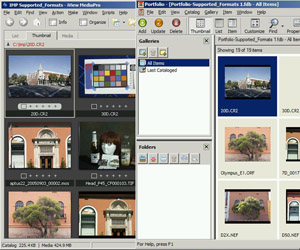

- #PORTFOLIO EXTENSIS EXPORT WITH METADATA SOFTWARE#
- #PORTFOLIO EXTENSIS EXPORT WITH METADATA WINDOWS#
One of the great things about doing all this digitally is that IPTC metadata can be searched instantly by any major photo cataloguing software, and, better still, desktop searching programs like Apple’s Spotlight or Google Desktop (for Windows users).


If you ever lost the paper, you’d be sunk. Imagine if you had a collection of 10,000 slides with all the captions written on a few sheets of paper, and nothing on the slides. If you ever change cataloguing software, or give a photo to someone else, or donate your entire collection, say, to a library, your images will be next to useless if their captions are not contained in the files themselves.
#PORTFOLIO EXTENSIS EXPORT WITH METADATA SOFTWARE#
There are many reasons to embed captions within the image itself but the main one is that you don’t want to have to rely on a single piece of software to keep track of your photographs. At CWF, we use all of these, as well as the Copyright field, and the Location field for the building name or street address. This is done using IPTC’s metadata fields, which include Description, City, State, Country, Photographer, etc. Whatever you decide to purchase, it is critical that you use one that has the ability to embed caption information directly into the photograph itself. Of course what they provide may be all you need. These include the various editions of Adobe Photoshop, of course, which allow image editing and image browsing, but are less capable at cataloguing as the dedicated DAM software. There are also programs that are less sophisticated as cataloguers but allow various degrees of photo editing. Most of them also have the ability to export to slideshows, or to the web, but have limited, if any, photo-editing capabilities. It is a marvelous way to keep track of large sets of images. In this way, you could have all of your photographs organized by city, or even neighborhood, but you could also have additional groupings for, say, a particular building type, or building technology, or even a particular lecture that you give repeatedly. These programs create a database of images that are on your computer or even on CDs or external hard-drives, allowing you to search and retrieve sets of images very quickly, no matter where they are stored. For managing growing collections of images, the best (but not the only) solution is a dedicated cataloguing program, sometimes called Digital-Asset-Management software.


 0 kommentar(er)
0 kommentar(er)
